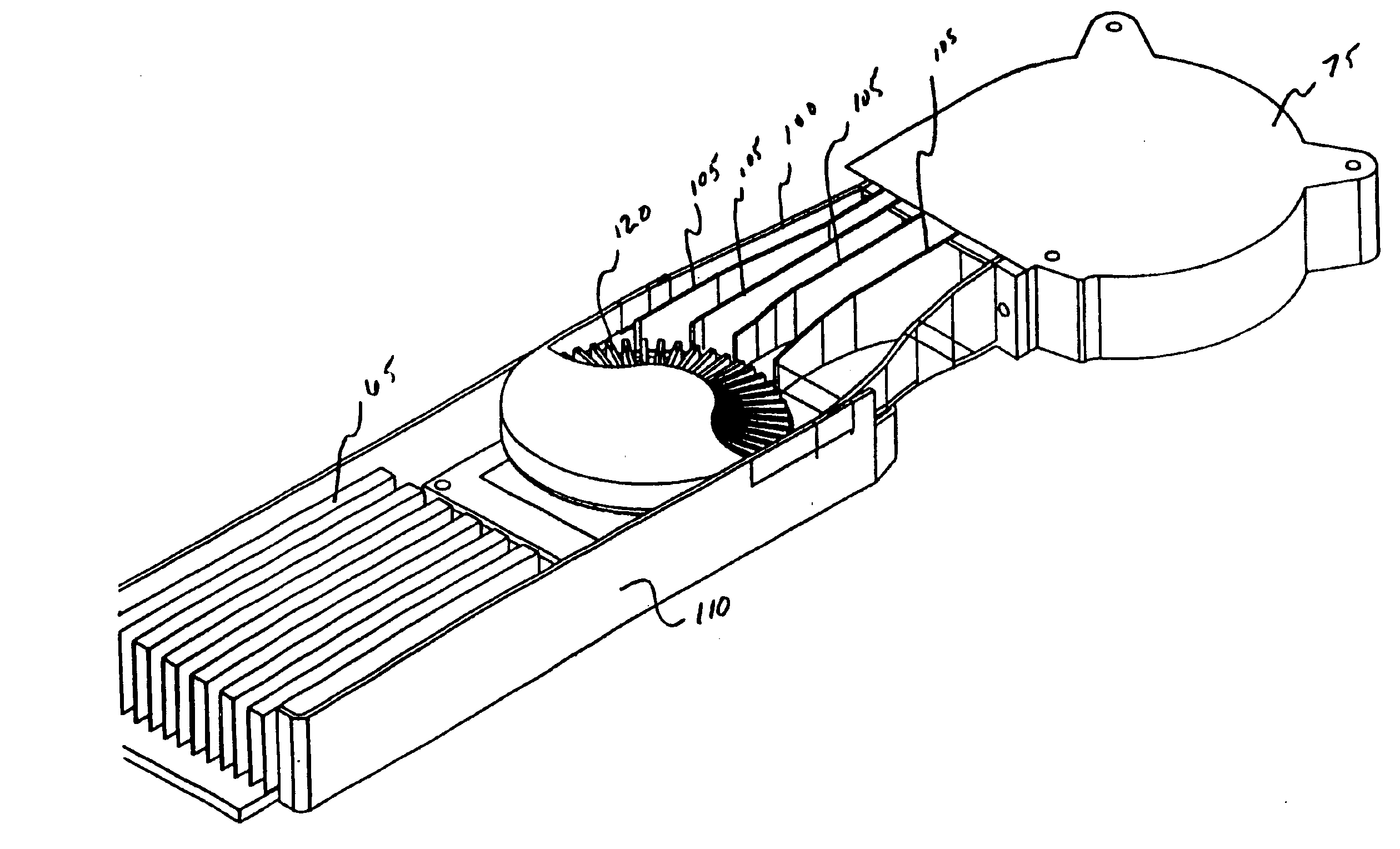Electronics cooling subassembly
a technology of electrical equipment and sub-assemblies, which is applied in the direction of electrical equipment contruction details, lighting and heating apparatus, air heaters, etc., can solve the problems of increasing the difficulty with which heat can be removed from heat sensitive circuits, increasing the difficulty of fan or blower to force air or other gas through heatsink fins/pins, and reducing turbulence and air boundary separation. , the effect of reducing turbulence and boundary flow separation
- Summary
- Abstract
- Description
- Claims
- Application Information
AI Technical Summary
Benefits of technology
Problems solved by technology
Method used
Image
Examples
Embodiment Construction
[0017]Referring now to FIGS. 1-3B in which like elements are provided having like reference designations throughout the several views, a prior art heat removal system is shown in FIG. 1, and the electronics cooling sub-assembly of the present invention is shown in FIGS. 2-3B.
[0018]As shown in FIG. 1, a prior art heat removal assembly 5 comprises a heatsink 60 coupled to a first heat producing device 50 and a second heat-producing device 40. A frame 20 is used to mount the first and second device to a module 10. In order to cool the devices 40 and 50 a pair of fans 70 and 80 are used. Fan 70 is disposed to direct an air stream to fan 80, which directs its air stream across heat sink 60. Heat sink 60 is a linear heatsink. This embodiment requires a significant amount of height, and is therefore not usable in many enclosures. Also, the heatsink 60 is a large, heavy component which has high costs associated with it. Further there is no EMI protection afforded the two devices by this con...
PUM
 Login to View More
Login to View More Abstract
Description
Claims
Application Information
 Login to View More
Login to View More - R&D
- Intellectual Property
- Life Sciences
- Materials
- Tech Scout
- Unparalleled Data Quality
- Higher Quality Content
- 60% Fewer Hallucinations
Browse by: Latest US Patents, China's latest patents, Technical Efficacy Thesaurus, Application Domain, Technology Topic, Popular Technical Reports.
© 2025 PatSnap. All rights reserved.Legal|Privacy policy|Modern Slavery Act Transparency Statement|Sitemap|About US| Contact US: help@patsnap.com



